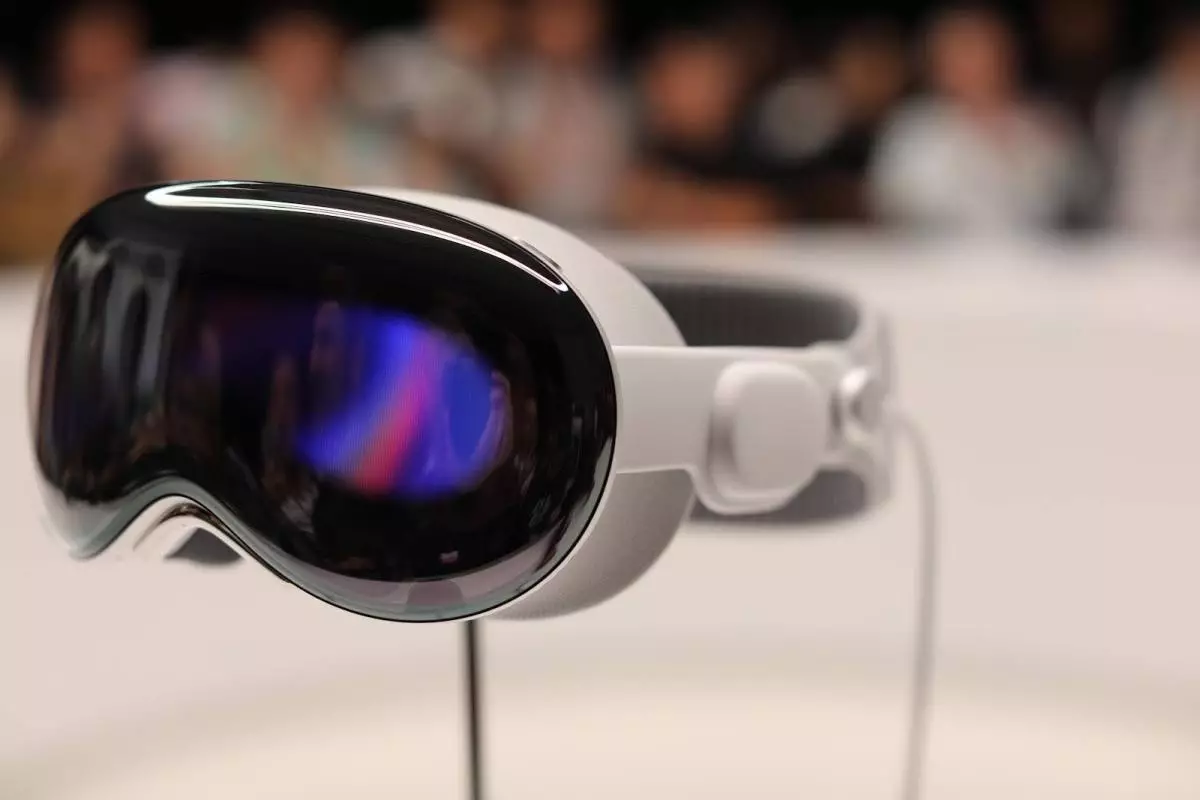Apple’s latest announcement regarding its generative AI integration into the Vision Pro headset marks a significant milestone in the evolution of spatial computing. With the upcoming visionOS 2.4 update, the company aims to seamlessly blend advanced artificial intelligence into this innovative device. Scheduled for public release in April following a developer beta test, this update is expected to revolutionize how users interact with their devices, opening doors to unprecedented capabilities in both personal and professional workflows.
Apple’s strategy of rolling out updates in phases has been a familiar approach across its product line, including the iPhone and Mac. For Vision Pro, the generative AI features such as Rewrite, Proofread, and Summarize have been introduced to enhance text and image generation. This incorporation signifies Apple’s commitment to fostering on-device workflows, enabling users to engage more intuitively and efficiently with their content. The intelligent capabilities embedded in the system aim to make the user experience not just more productive but also more enjoyable by minimizing friction in daily tasks.
One of the more challenging aspects of interacting with the Vision Pro has been its default typing mechanism, which requires a series of actions that can feel cumbersome for extended input. Users must focus on each letter and then select it with a pinch gesture, a method that can become tedious during long texts. While alternatives exist, notably voice input, the nuances of using voice features are sometimes fraught with misunderstanding. Nevertheless, Apple’s enhancements to Siri, particularly through its AI-powered capabilities, herald a promising future for voice dictation within the Vision Pro universe. The convergence of voice and generative AI tools is key to delivering a streamlined writing process, potentially transforming the device into a must-have for professionals and creatives alike.
Among the standout features of the visionOS 2.4 update is “Image Playground,” a powerful tool for generating images directly from verbal commands. This feature is excellently positioned within the Photos app, promising effortless integration into the user’s creative process. By transforming simple verbal prompts into visual content, Apple seeks to redefine creativity in a spatial context. This approach not only emphasizes ease of use but also showcases the capability of AI to enhance artistic expression, providing users with tools that were previously confined to advanced graphic design software.
In conjunction with the visionOS 2.4 update, Apple is also launching a Vision Pro iPhone app as part of iOS 18.4. This new app serves multiple functions, primarily focusing on content management for the Vision Pro. Users can browse options for shows and movies on a more user-friendly platform—the iPhone—before transitioning them to the headset. This strategic move acknowledges the comfort and practicality concerns that come with prolonged headset use, addressing potential battery life limitations while simultaneously enhancing the user experience. Furthermore, the app introduces a guest account feature, facilitating seamless sharing and interaction while maintaining user privacy and control over their device.
As the lines continue to blur between traditional computing and immersive experiences, Apple’s Vision Pro represents a significant leap into the future of personal technology. The integration of generative AI is not merely an add-on; it is a fundamental aspect of how users will engage with their digital environments. By leveraging existing familiar functionalities, while innovating with advanced AI capabilities, Apple is paving the way for a future where technology feels more intuitive and integrated into everyday life.
In an age where productivity and creativity are paramount, Apple’s Vision Pro positions itself as a game-changer—both in how we work and how we play. As advancements in technology continue, the implications of these innovations for the user experience in spatial computing are manifold, promising to reshape our interaction with digital media for years to come.

